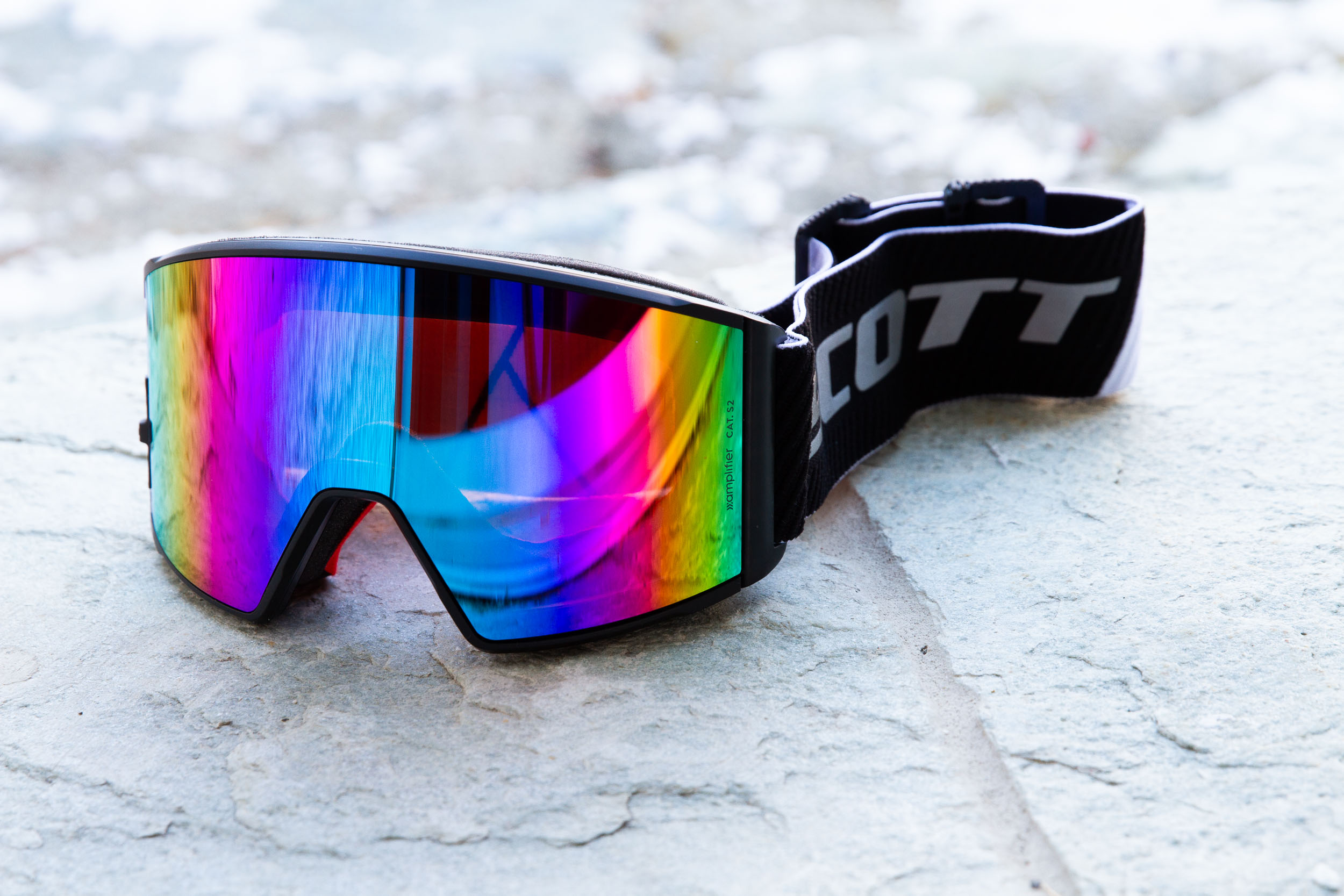
Gear
Magnetic attraction
Gear Spotlight: Scott React Goggle
Scott Sports makes everything from bikes and skis to outerwear and shoes. So it’s easy to forget one of the original mainstays of the their business: the goggle. Scott has been in the eyewear business since 1970, so it’s safe to say that they’ve learned a thing or two about making a good goggle over the past fifty-something years.
I’ve been wearing a Scott goggle for a couple of years now, the LCG, and have absolutely no complaints—fantastic lenses, an easy lens exchange system with a locking lever on the side of the frame, minimal fogging issues. Even with the foam now slowly giving way to inevitable wear and tear after three years of regular use, I’ve been more than satisfied. So I was excited to get my hands on the latest model from Scott, the all-new React goggle. Let's take a closer look.

THE BASICS
The React is the first Scott goggle with a “fully integrated” magnetic closure system. To be honest, I’m not exactly sure what they mean by “fully integrated,” but I’m guessing it means that the magnets are the main retention system holding the lens to the frame. Crucially, the magnets are also backed up by a physical locking system, with a pin and hinge system on one side of the frame and a robust plastic locking lever on the other side. For me, this locking system is the most important part of any magnetic lens design—more on that later.
In the optics department, the React is outfitted with Scott’s Amplifier Lens Technology and an anti-fog lens treatment. Scott even goes so far as to give their lenses a fog-resistant guarantee—for whatever that might be worth. There’s a lot of science behind the Amplifier technology, but in a nutshell, it selectively filters the visible light curve, adding contrast by optimizing transmission of three light wavelengths: blue, orange and red. If you’re a real optics nerd, you can read up on the Amplifier tech on Scott’s website (link), but for the laypeople among us, it suffices to say that Scott has invested a lot of time and energy in their lens tech. My test goggles came with a mirrored Enhancer lens (Category S2, for mostly sunny conditions) in Teal Chrome, and an Illuminator lens (Category S1) in Blue Chrome for low-light and variable conditions.
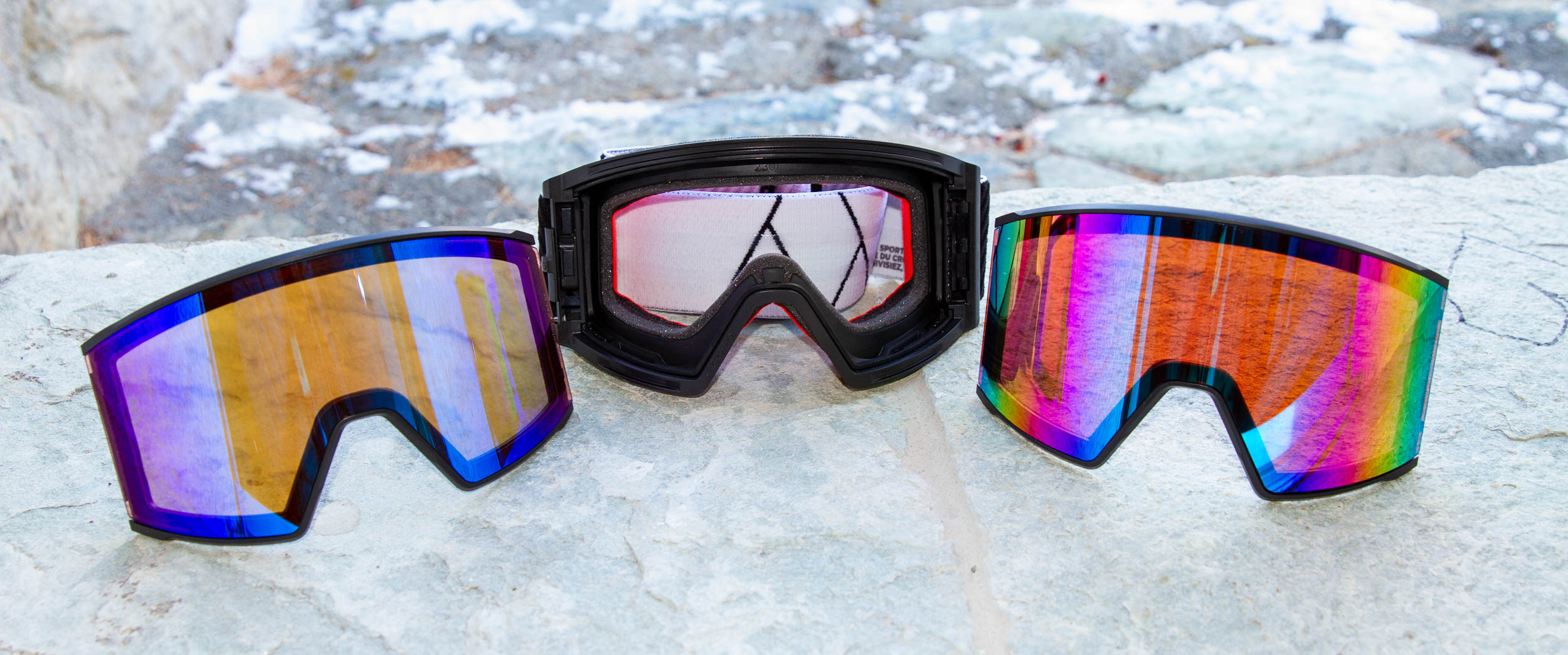
The React goggle with Illuminator Blue Chrome lens (left) and Enhancer Teal Chrome lens (right). Scott offers a total of 21 different Amplifier lenses, from totally clear to dark solar blockers.
On a side note: Starting this winter, the React goggle will also be available with Scott’s next-gen Amp Pro lenses, which promise even better contrast in medium and low-light conditions. We'll have more on that when the new tech is officially announced later this winter.
Wrapping up the details, the React also comes with “no sweat” 3-layer molded face foam that's colored in an eye-catching orange, and a robust, extra-wide strap with two no-slip silicon bands to keep it firmly seated on your helmet or beanie.
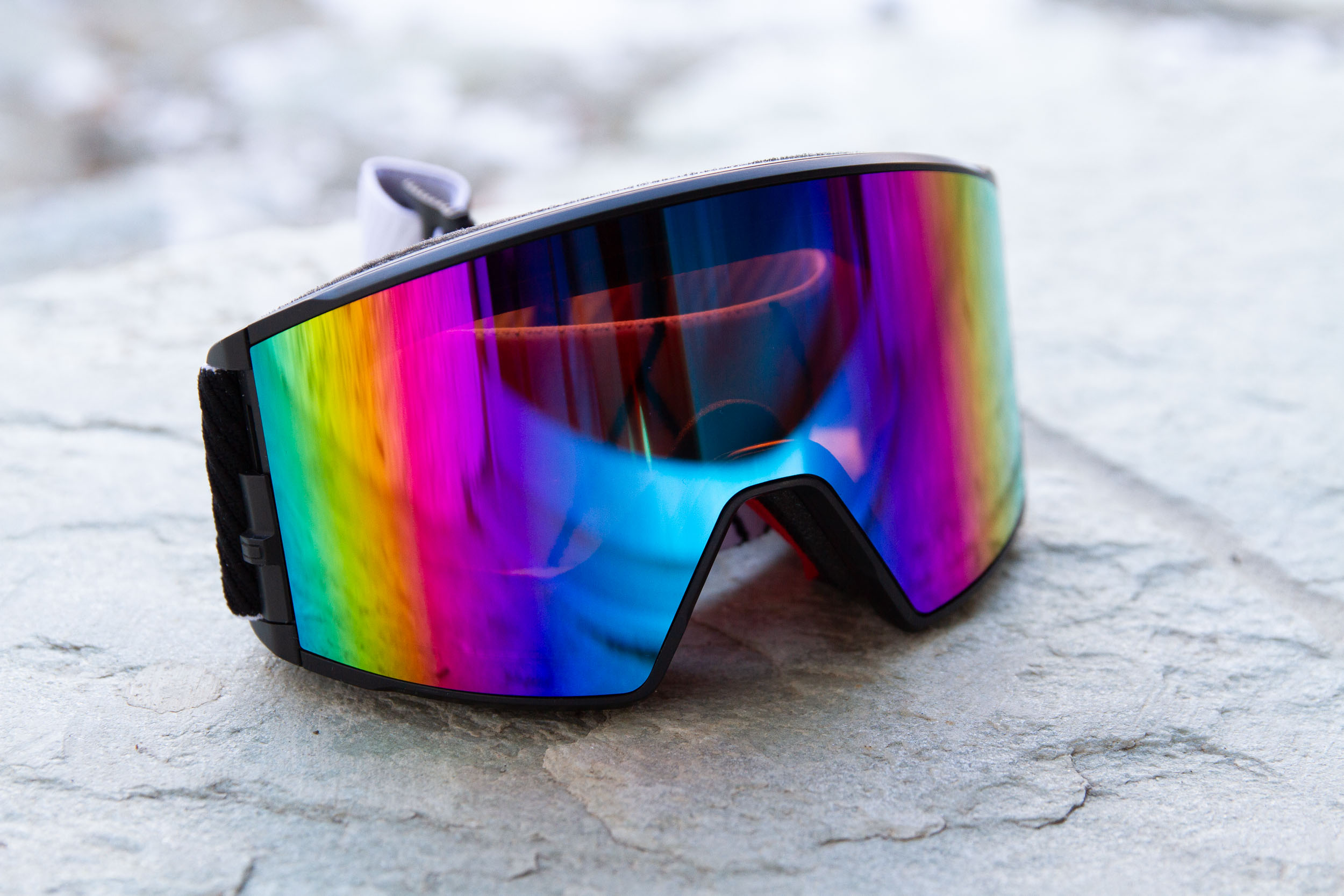
FIRST IMPRESSIONS
Right out of the box, Scott impresses with its attention to detail. In addition to the standard soft goggle bag, the kit also includes a gogglesoc-style lens protector. There’s also a separate hard case for the extra lens. This may not seem like a big deal, but protecting your lenses is key to their longevity. Scott is going the extra mile here with the storage accessories.
The design of the React falls squarely within the realm of the “shield” shape that’s been growing in popularity for the past few years in the sunglasses market. There’s an aesthetically pleasing mix between curves and straight lines, from the sweeping arch of the top bridge to the vertical lines on the sides of the lens, and a small but eye-catching flat section above the nose. Overall, the React definitely qualifies as a “big” goggle on the face, without overdoing it. The minimized frame profile and maximized lens size definitely emphasizes this effect. For glasses-wearers, there seems to be more than enough interior space for glasses compatibility, and Scott assures us that this is the case.

MAGNET TRUST ISSUES
As I mentioned earlier, having some kind of locking system is absolutely essential for any magnetic lens, and the React fulfills this requirement with room to spare. Heed my words: If a goggle doesn’t have a secure, physical lock system to secure the lens, it does not actually have a “magnetic lock” as the manufacturer would like to assure you. It has what I like to call a “lens ejection system.” In other words, the first time you take a good tumble, your lens is going to go flying like a pilot bailing out of a burning plane. Good luck finding that sucker in the powder, or keeping it from fogging for the rest of the day if you actually do. That’s why having a physical, non-magnetic lock to secure your lens to the frame is so important.
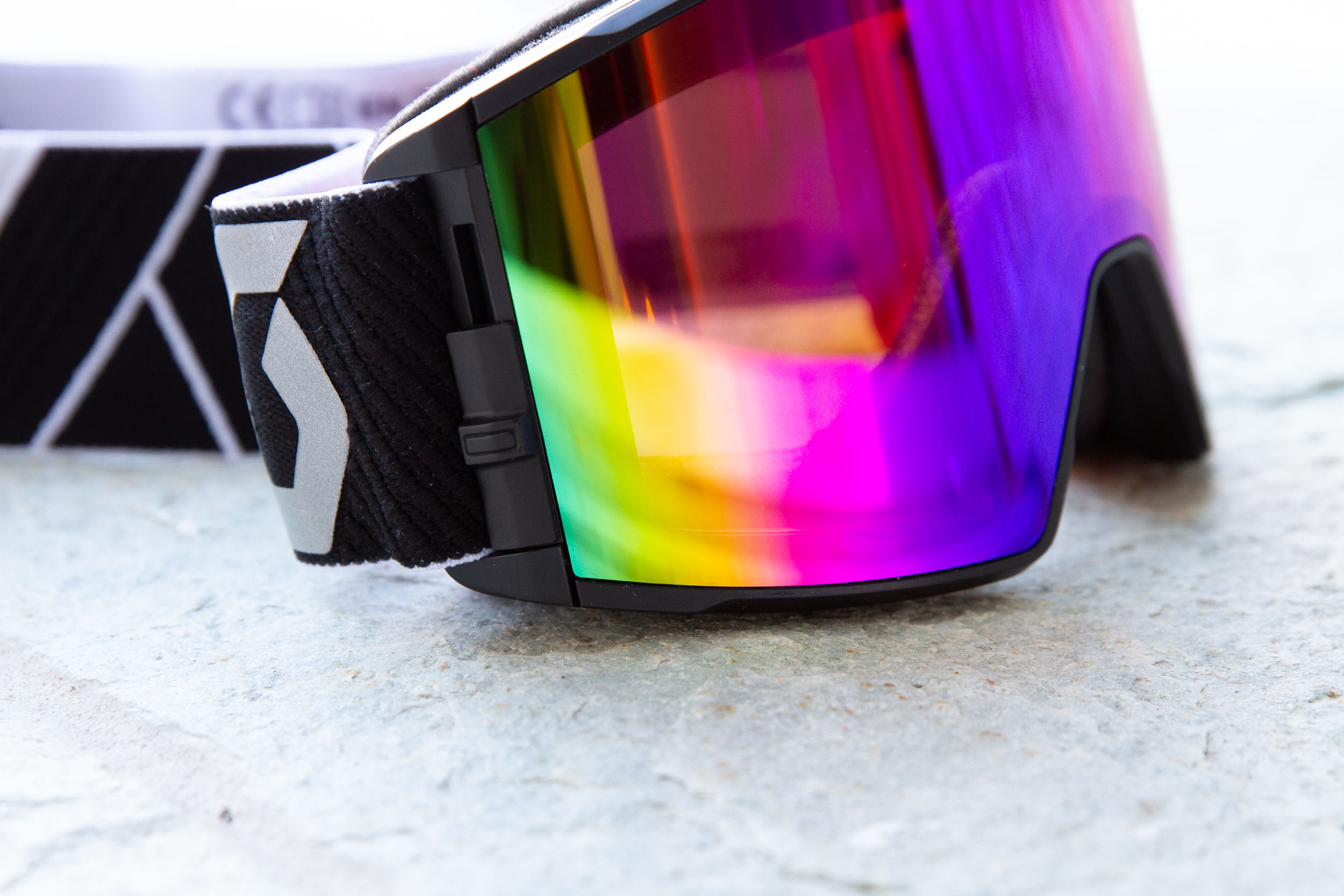
This lever unlocks the lens for exchange. When the new lens is in position, it automatically locks it into place. Just make sure the tabs on the other side are locked in too!
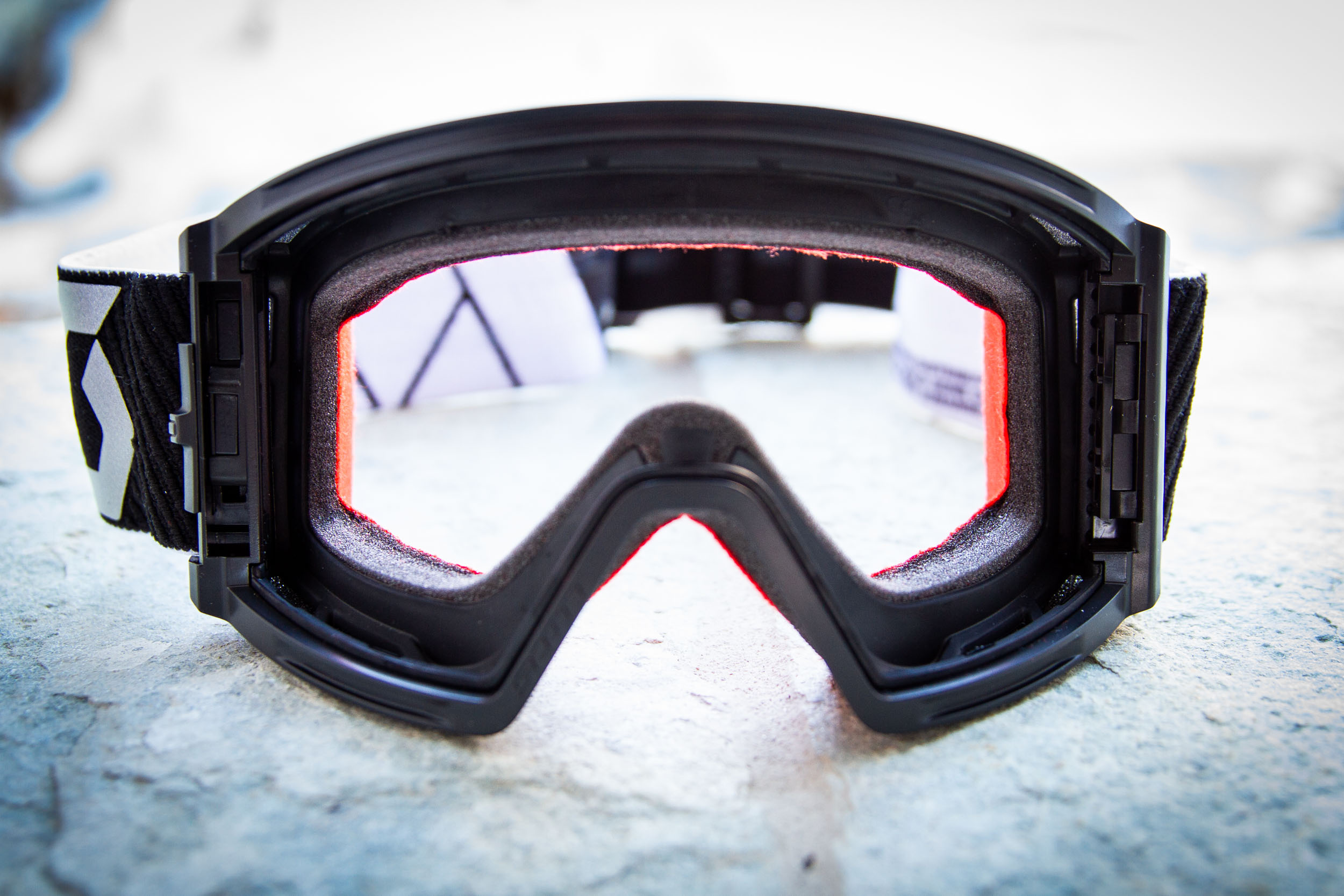
On the right side, the lens clips into the frame with the help of two small tabs and a hinge mechanism, before locking securely into the frame on the left. It´s a bombproof system, but takes some getting used to.
Scott has taken this principle to heart with the React, as it has in all its goggles. The locking system seems bulletproof: This pilot is going down with the plane, even on the most vicious tomahawk.
If I’m going to criticize any element of the design, it's probably the “hinge” on the opposite side of the frame from the lock. On this side, the lens locks into the frame with two low-profile plastic tabs. These tabs are quite small, especially compared to the LCG goggle I’ve been using. If you’re not paying attention while swapping out lenses, it’s not easy to tell whether or not you’ve locked in the new lens correctly. The magnetic connection snaps the lens quickly onto the frame, but if you haven't properly aligned those tabs, your lens isn't actually secure. I'd definitely recommend double-checking this connection a few times until you get the hang of it; once you do, it's not an issue.
There also appears to be just a bit of wiggle in the magnetic connection between lens and frame right above the nose, but otherwise the seal is solid and secure. I haven’t put this goggle through the tomahawk test yet, but once I do, I’ll be sure to let you know.
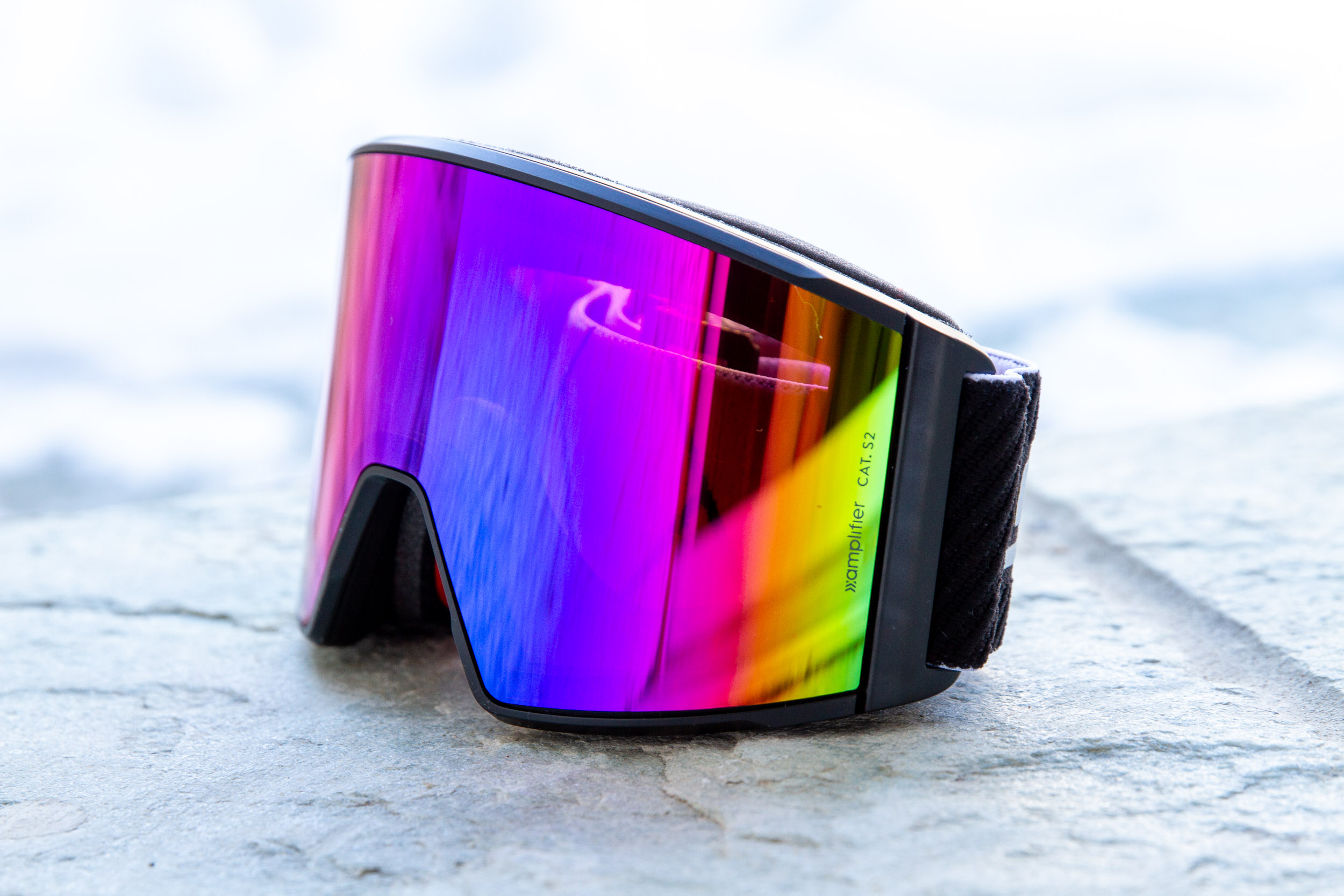
The final say
All in all, the React is a modern, stylish goggle that doesn’t just look good, but backs up its appearance with proven optics and a quality design. There are a lot of different goggles to choose from on the market today, but only a few of them can truly claim to provide a superior experience in terms of quality, durability and optical performance. The React and its Amplifier lenses definitely fall into that category. From Scott, I wouldn't expect anything less.